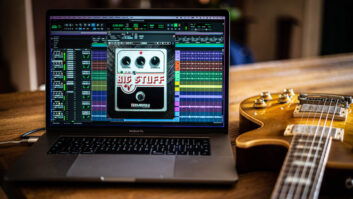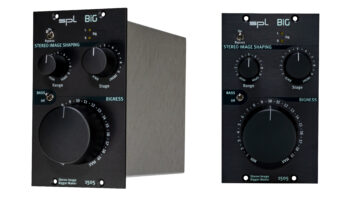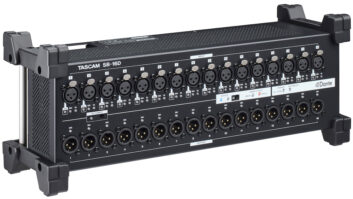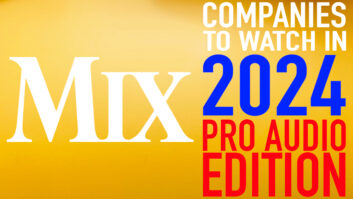In March 2004, Mix introduced its IT glossary for pro audio folks. The data dictionary continues this month with more tech talk than you can shake an Ethernet cable at. Italicized words will be defined in the glossary, some in upcoming installments.
Dolby Digital: see AC-3.
Domain Name: the human-readable names that uniquely identify a Website. Domain names comprise two parts: the second-level domain name and its TLD separated by a “dot,” or period. In my case, my second-level domain name is “seneschal” and its TLD is “net,” resulting in the complete domain name, seneschal.net. Domain names are mapped to a particular server via DNS.
Downtime: the opposite of uptime. This refers to the amount or percentage of time that a product, system or service is operational.
DNS (Domain Name Service, Domain Name System): DNS is used to describe two related processes; the Domain Name System and Domain Name Services are based on that system. The Domain Name System is a distributed hierarchical database that maps domain names such as www.seneschal.net to their corresponding IP addresses, which, in seneschal.net’s case, is 216.183.98.5. The Domain Name Services are simply servers whose “job” is to provide name resolution to its connected network.
DSN (Data Service — level 0, 1, 2, etc.): Originally denoting the data rate necessary to carry a single digitized (PCM) voice, DS-0 (zero) has come to mean a 64-kbaud data service. DS-1, at 1.544 Mbps, can carry 24 TDM-multiplexed streams, and DS-2 carries four DS-1 loads. At a DS-3 level, 672 individual calls can pass down the same “pipe.”
DSL (Digital Subscriber Line): a technology that overlays data services on POTS. DSL is available in several tiers, including symmetrical (SDSL) and asymmetrical (ADSL) service at a variety of data rates, with and without QoS guarantees.
DTS (Digital Theater Systems): Originally designed for multichannel motion picture soundtracks, DTS’ lossy codecs compete with Dolby Labs for consumer mind share.
DTV (Digital Television): a mess created by a lack of will on the part of appointed officials and outlandish lobbying by broadcasting special interests.
DWDM (Dense Wave Division Multiplexing): frequency-domain multiplexing in the optical domain, whereby thousands of digitized streams are imposed on different frequencies or colors of laser light and launched simultaneously down an optical fiber. Frequency-discriminating detectors at the destination sort out each carrier color and decode the data. DWDM is used by telecoms to dramatically increase the payload capacity of in-place fiber.
Encryption: converting information from an open form to a closed secret form requiring hidden knowledge to convert the data back into the open form.
Ethernet: a LAN method, first described in 1973, that has become as ubiquitous and adaptable as computers themselves. A “broadcast computer communications network” originally invented at Xerox PARC by Bob Metcalfe and his team, Ethernet has managed to prosper and evolve during a 30-year lifespan, an eternity by any measure of computer technology.
Error correction: the process that follows error detection, whereby the original data is recovered after some impairment.
Error detection: the ability to detect corruption in a set of data. Metadata is often included in a file, packet or stream, such as parity bits, that facilitates error detection and subsequent correction.
Essence: In a digital stream or file, essence is the portion of the data that contains the “raw” or basic information of interest, excluding metadata and framing.
Exabyte: a company and a family of tape-based storage products manufactured by that company.
Executable: a binary (only machine-readable) file containing a program that can be “run” or executed by a computer.
Fabric: a collection of network or channel nodes that are cross-connected in a many-to-many scheme rather than individual isolated point-to-point or loop topologies.
FC (Fibre Channel): a networked storage standard designed to provide high availability, performance and scalable storage with reliable QoS and unified management. Due to industry in-fighting and lack of standardization, FC is being supplanted by other less-expensive networked storage standards.
FCIP (Fibre Channel [Over] IP): a method of encapsulating or “tunneling” FC protocols so that they can be transported over an IP-based network. FCIP allows FC-based storage networks to be extended from LAN to MAN and WAN distances.
File-level: the ability to only read and modify an entire file and not the underlying protocols that address the storage device on which the file resides. The term “file level” is often used to differentiate “file-level” NASs from “block-level” SANs.
Filter, to filter: data processing to remove or ignore unwanted information.
FireWire: a comprehensive set of scalable standards (IEEE 1394) originating at Apple for P2P serial data connectivity of rich media, which includes IPP, broad PHY support and both asynchronous and isochronous transport.
Fractional: used by telcos to describe a lower tier or service level of bandwidth. Fractional T-1 is a lower-bandwidth version of T-1 service offered at lower cost.
Frame: iIn IT land, a frame is synonymous with a packet.
Frame Relay: an interface specification based on ISDN data link layer protocol.
Framing: a self-contained unit of data, complete with addressing and control information.
Framing bits: header and trailer structures that delimit the start and end of a frame of data.
FTP (File Transfer Protocol): provides basic insecure file and directory management between remote computer systems.
FUD: an acronym meaning fear, uncertainty and doubt. Used by public relations purveyors to undermine public confidence in a competitor.
Full duplex: an equal-bandwidth, bidirectional communications channel. Telephones are full-duplex, while two-way radios (walkie-talkies) are (wireless) half-duplex. Both Ethernet and PCI are half-duplex with one “talker” at a time.
GigE, Gig-E (Gigabit Ethernet): a shorthand way of saying “1000BASE-T.” See IEEE 802.nx.
Hardware: any tangible physical computing asset.
HBA (Host Bus Adapter): hardware that provides interface services, both at the PHY and logical layers, between some communication standard and a computer’s operating system.
Come back next month for letters I through R. And fret not — we will assemble all four parts for easy download.
OMas has been on the road again, which is a good thing. This time around, he worked up this column in the panoramic poshness of the Hôtel Delta Centre-Ville while under the influence of the HorrorPop’s release of Hell Yeah! on Epitaph.







